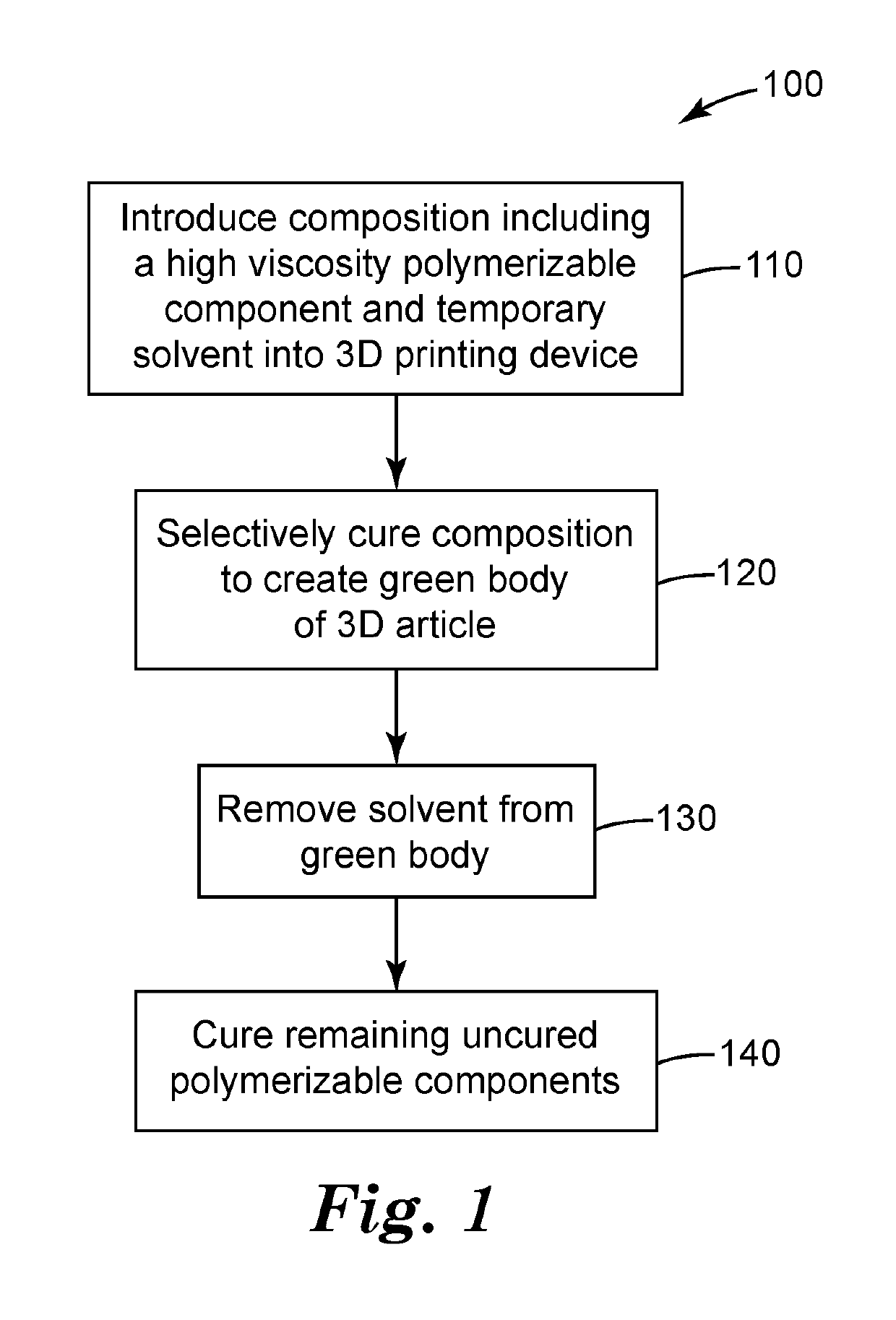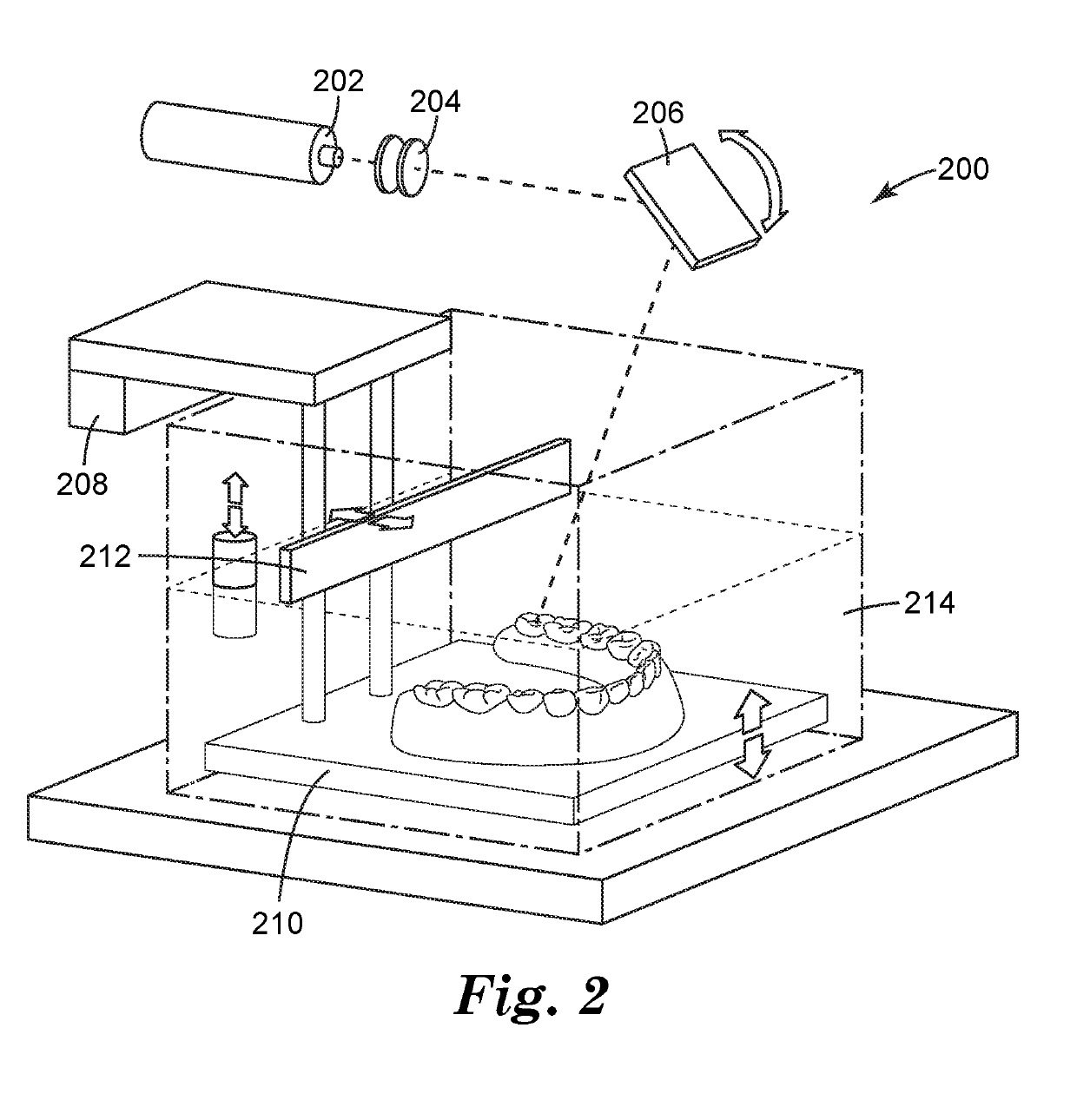Printable compositions including highly viscous components and methods of creating 3D articles therefrom
a composition and high viscosity technology, applied in the direction of photomechanical equipment, additive manufacturing processes, instruments, etc., can solve the problems of insufficient cure rate of green bodies, in general, and achieve excellent mechanical properties, low viscosity, and proper curing rate
- Summary
- Abstract
- Description
- Claims
- Application Information
AI Technical Summary
Benefits of technology
Problems solved by technology
Method used
Image
Examples
embodiments
[0125]1. A method for building a three-dimensional object, the method comprising: a) providing a printable composition comprising a high viscosity polymerizable component, a temporary solvent, and an initiator; b) selectively curing the printable composition to form an article representing the shape of the three-dimensional object; c) removing a substantial amount of the temporary solvent from the article; and d) optionally curing unpolymerized polymerizable component remaining before or after step c).
2. The method of embodiment 1, wherein the printable composition has a viscosity no greater than 15,000 cP at 25° C. 3. The method of embodiment 2, wherein the printable composition has a viscosity no greater than 10,000 cP at 25° C.
embodiment 3
4. The method of embodiment 3, wherein printable composition has a viscosity of no greater than 5,000 cP at 25° C.
5. The method of any of the previous embodiments, wherein the temporary solvent in nonreactive in the printable composition resin.
embodiment 5
6. The method of embodiment 5, wherein the temporary solvent constitutes 10 to 40 wt. %, based on weight of the total printable composition.
PUM
| Property | Measurement | Unit |
|---|---|---|
| viscosity | aaaaa | aaaaa |
| viscosity | aaaaa | aaaaa |
| viscosity | aaaaa | aaaaa |
Abstract
Description
Claims
Application Information
 Login to View More
Login to View More - R&D
- Intellectual Property
- Life Sciences
- Materials
- Tech Scout
- Unparalleled Data Quality
- Higher Quality Content
- 60% Fewer Hallucinations
Browse by: Latest US Patents, China's latest patents, Technical Efficacy Thesaurus, Application Domain, Technology Topic, Popular Technical Reports.
© 2025 PatSnap. All rights reserved.Legal|Privacy policy|Modern Slavery Act Transparency Statement|Sitemap|About US| Contact US: help@patsnap.com



